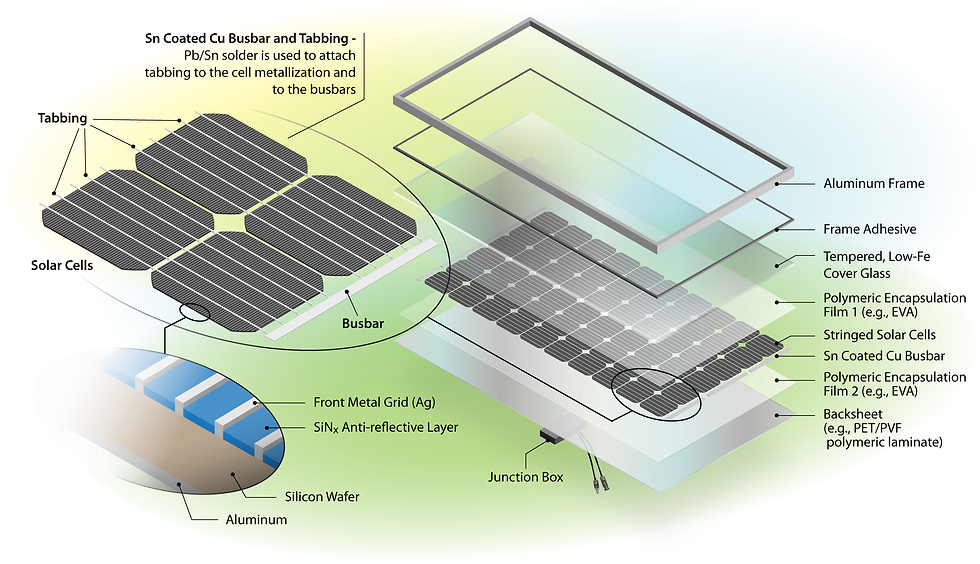Recycling Solar Cells: Challenges and Current Status
- Sophie Wassef

- Aug 10, 2024
- 3 min read
Updated: May 21, 2025
A look into the current obstacles and status of silicon solar cell recycling.
As governments pledge to transition to renewable energy, solar power has emerged as a major player in the production of the next generation of energy. Solar energy is projected to account for 45% of the United States' energy production by 2050. This demand will require rapid development of solar technologies, such as the solar cell. According to the Department of Energy (DOE), silicon solar cells are the most common solar cells on the market, making up about 95% of solar cells in use.

Silicon solar cells are low-cost, highly efficient, and stable for a relatively long period of time. The process of producing these solar cells is widely understood and benefits from being closely connected to other semiconductor industries, such as the electronics industry. Due to these characteristics, research directed towards improving silicon solar cells is largely supported, and these cells will likely dominate the market for the foreseeable future.
Well, it looks like solar energy is a perfect option for minimizing our environmental impact!
This is what I and probably many others thought when first learning about solar energy and its potential. However, I had never stopped to consider not only the outcome of solar energy (clean, renewable energy) but also what would happen when a solar cell's life was up. When considering this aspect, it is revealed that despite the overall minimization of emissions and pollution that comes with solar energy, it is not zero. This is particularly true regarding the recycling of silicon solar cells.
By 2050, it is projected that solar panel waste will reach 80 million metric tons per year. This is a problem when considering that silicon solar cells do not have a well-established recycling system that can safely dispose of the various materials that make up solar cells. To understand why that is, we first have to go over what makes up silicon solar cells.
Silicon solar cells are constructed with several recyclable materials, including glass, aluminum, copper wire, and plastic. These materials already have established recycling industries, which make them easier to reuse. However, certain materials, such as silver and other precious metals, are harder to extract and are usually present in smaller amounts in the solar cell, which often leads to them being incinerated instead of recycled. In addition, silicon solar cells also contain the metals lead and cadmium, which are considered dangerous to human health and the environment. If these materials are just dumped into a landfill when their use is over, there may be major consequences.
How are you feeling about the future of solar cell recycling?
I am optimistic!
Meh...
It's doomed :(
It is both beneficial to the environment and economy to improve the system for recycling solar cells. By creating a safe recycling system, we can avoid releasing harmful chemicals and pollutants into the environment and our lives. If the majority of materials within solar cells are recovered at high purity levels in the recycling process, they can be reused for new cells. Recovering precious materials is much more cost-effective than simply burying dead solar cells in the ground.
The transition to renewable energy sources like solar power is crucial for a sustainable future. However, our reliance on silicon solar cells and other similar technologies brings the challenge of managing solar panel waste. Developing a robust recycling infrastructure for these cells will help us avoid environmental hazards and recover valuable materials, making the process economically viable. As we continue to innovate and improve solar technologies, addressing the end-of-life management of solar cells is essential to fully reap the benefits of solar energy without overlooking our continued environmental impact.
--Sophie Wassef



Comments